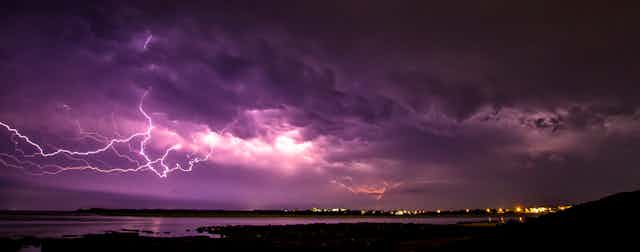Two years ago the Climate Commission released its first major report, The Critical Decade: Climate Science Risks and Responses. The report synthesised the most recent climate change science. The phrase, “The Critical Decade”, has become the defining mantra for the Climate Commission: the climate needs significant Australian and global action this decade.
Two years on, and one quarter of the way through the decade, we have systematically updated the report. One quarter of the way through the Critical Decade how far have we come?
Our understanding of the climate system has continued to strengthen
Over the past half-century rapid changes have been observed across the world in many features of the climate system. We have seen changes in heating of the ocean and the air; changing rainfall patterns; decrease in the area of Arctic sea ice; mass loss of polar ice sheets; increasing sea level; and changes in life cycles and distributions of many plants and animals.
Importantly the basic principles of the physical science have not changed. For decades there has been a clear and strong global consensus from the scientific community that the climate is changing, human activities are the primary cause and that the consequences for humanity are extremely serious.
Scientists are now moving to new challenges, such as improving our understanding of potential abrupt or irreversible changes in major features of the climate system and changing rainfall patterns. The developments over the last two years add a greater richness to our understanding and further reinforce the underlying climate science.
Many of the things scientists warned us about are now happening
There is now a growing appreciation that climate change is already having significant impacts on human health, agriculture, fresh water supplies, property, infrastructure, and the natural ecosystems upon which our economy and society depends. The consequences of climate change were once a matter for the future, but as the climate shifts we are already witnessing the consequences.
The duration and frequency of heatwaves and extremely hot days has increased. The number of record hot days has more than doubled in Australia in the last 50 years. The number of heatwaves is projected to increase significantly into the future. In Australia, heat kills more people than any other type of extreme weather event. Increasing intensity and frequency of extreme heat poses health risks for Australians and can put additional pressure on health services. Changes in temperature and rainfall may also allow mosquito-borne illness like dengue fever to spread south.
In many parts of Australia, including southern NSW, Victoria, Tasmania and parts of South Australia, extreme fire weather has increased over the last 30 years. Rainfall patterns are shifting. The southwest corner of Western Australia and much of eastern Australia has become drier since 1970. Dry areas of Australia are likely to become drier into the future, threatening food and water security. For instance, sharply declining rainfall in south-west Western Australia has put pressure on farmers and urban water supplies.
It is now clear that the climate system has already shifted, changing conditions for all weather. While extreme weather events have always occurred naturally, the global climate system is hotter and wetter than it was 50 years ago. This has loaded the dice toward more frequent and forceful extreme weather events. Last summer gave Australians a window on the future of the type of weather we can expect to see more frequently.
Progress is being made to reduce emissions; far more needs to be done
There has been meaningful global progress in the last two years. All major economies, including China and the US, are putting in place policies to drive down emissions and grow renewable energy. It will take some time to see the full impact of these policies.
Greenhouse gas concentrations are still increasing at the fastest rate on the recent geological record. The nations of the world, including both sides of Australian politics, have agreed that the consequences of a 2°C rise in global temperature are unacceptably severe.
The best chance for staying below the 2°C limit requires global emissions to begin declining as soon as possible and by 2020 at the latest. Emissions need to be reduced to nearly zero by 2050. Stabilising the climate within the 2°C limit remains possible, provided that we intensify our efforts this decade and beyond.
Burning fossil fuels is the most significant contributor to climate change. From today until 2050 we can emit no more than 600 billion tonnes of carbon dioxide to have a good chance of staying within the 2°C limit. Based on estimates by the International Energy Agency, emissions from using all the world’s fossil fuel reserves would be around five times this budget. Burning all fossil fuel reserves would lead to unprecedented changes in climate so severe that they will challenge the existence of our society as we know it today. It is clear that most fossil fuels must be left in the ground and cannot be burned.
It is the Critical Decade to get on with the job of tackling climate change.

